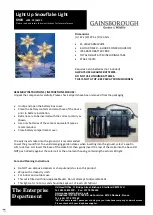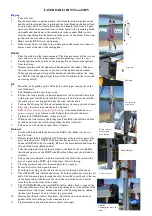
4-2
IM DLM3054-01EN
Trigger Type (Type)
The following trigger types are available.
EDGE
•
: Triggers on the edges of a single trigger source (a simple trigger).
ENHANCED
•
: Triggers on the OR logic of multiple trigger source edges.
•
: Triggers on a pattern match, pattern mismatch, or pattern duration.
•
: Triggers on a trigger source pulse-width condition (such as More than, Less than, and
Between).
•
: Triggers on duration of the trigger rise or time (such as More than, Less than).
•
: Triggers on a runt pulse or the duration of a runt pulse.
•
: Triggers when a timeout occurs before the end edge of a pulse.
•
: Triggers when the signal enters or exits from a specified range (window) or on the duration in
which the signal stays within the range or outside the range.
•
: Triggers on the OR logic of multiple trigger sources entering or exiting from each specified
range (window).
•
: Triggers when the time condition of the signal period is met.
•
*: (FlexRay, CAN, CAN FD, LIN, CXPI, SENT, UART, I2C, SPI, User Define): Triggers on various
serial bus signal conditions.
•
: (NTSC, PAL, SDTV, HDTV, UserdefTV): Triggers on various TV signal conditions.
* The FlexRay, CAN, CAN FD, LIN, CXPI, SENT, UART, I2C, and SPI bus triggers are options available only
for 4-channel models.
• The active trigger, EDGE or ENHANCED, is the one whose key is illuminated.
• You can also configure the instrument to trigger on the combination of trigger A and trigger B, where trigger
A is the trigger configured using the EDGE or ENHANCED key, and trigger B is the trigger configured using
the B TRIG key. The combination trigger is active when the B TRIG key is illuminated.
Forced Trigger [FORCE TRIG]
Pressing FORCE TRIG (SHIFT+B TRIG) on the front panel forces the instrument to trigger even when trigger
conditions are not met.
4 Triggering
















































